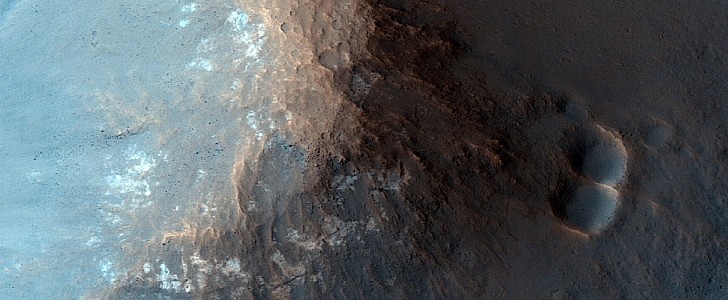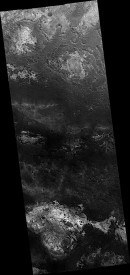Back in May, the American space agency released the latest data on the number of asteroids going about their business in the cosmic vicinity of our planet. And there is an entire army of them, with 25,705 moving about at various distances from our planet. And those are the ones we know of.
Our solar system has countless pieces of such pieces of rock floating free. Most of them come from the asteroid belt, located between the orbits of Mars and Jupiter. And that kind of explains why our red, neighboring planet is virtually riddled with the marks of violent impacts.
Having studied the place from both on the ground and from orbit for a while now, we humans know Mars is a heavily-impacted place, possibly at times managing to stop some of these rocks making their way over here.
We’ve also uncovered that, given enough time, a large number of asteroids will sometime result in clusters of impact craters that kind of makes us tremble at how good nature’s aim sometimes is.
The main photo of this piece shows a portion of the Mawrth Vallis in the Oxia Palus quadrangle, an image taken back in 2014 by the HiRISE camera from an altitude of 291 km (181 miles).
Officially, it shows clay layers, as this is what the people over at NASA and the University of Arizona are looking at in this image as they try to “establish continuity of clay layers” and “interpret the geological story going on here.”
Of interest, too, however, are the four tightly packed impact craters to the right of the image, the two large ones stacked on top of each other vertically, and two smaller ones to either side of this pair, looking like the ears of Mickey Mouse.
Chances are those ears are secondary impact craters, meaning they’ve been formed by the ejecta thrown into the air by the initial impact, but that does not take away one bit of the place’s aura of mystery.
Having studied the place from both on the ground and from orbit for a while now, we humans know Mars is a heavily-impacted place, possibly at times managing to stop some of these rocks making their way over here.
We’ve also uncovered that, given enough time, a large number of asteroids will sometime result in clusters of impact craters that kind of makes us tremble at how good nature’s aim sometimes is.
The main photo of this piece shows a portion of the Mawrth Vallis in the Oxia Palus quadrangle, an image taken back in 2014 by the HiRISE camera from an altitude of 291 km (181 miles).
Officially, it shows clay layers, as this is what the people over at NASA and the University of Arizona are looking at in this image as they try to “establish continuity of clay layers” and “interpret the geological story going on here.”
Of interest, too, however, are the four tightly packed impact craters to the right of the image, the two large ones stacked on top of each other vertically, and two smaller ones to either side of this pair, looking like the ears of Mickey Mouse.
Chances are those ears are secondary impact craters, meaning they’ve been formed by the ejecta thrown into the air by the initial impact, but that does not take away one bit of the place’s aura of mystery.






